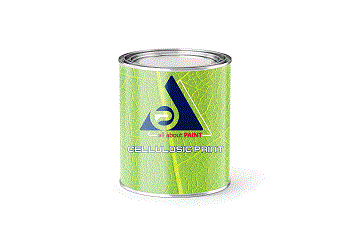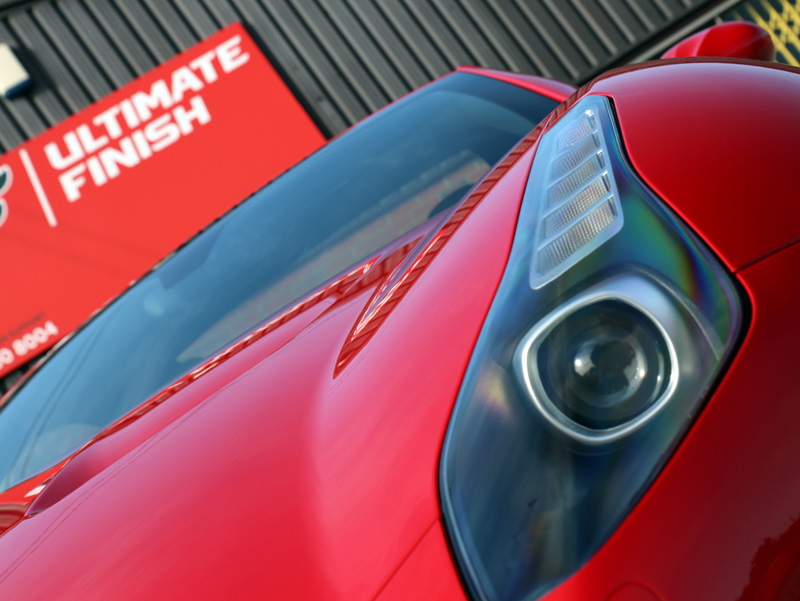Spray Gun Tips for Flawless Finishing
.jpg)
Spray Gun Tips for Flawless Finishing
Every painter wants a flawless finish. However, some always seem to run into trouble. While paint booth configuration and surface preparation play a major role in the finishing process, there are some tips and tricks that may also help. Here are four of the best spray gun tips painters should be following to help achieve a better finish.
Tip #1: Choose the Right Spray Gun
Choosing the right spray gun depends entirely on what is being sprayed—clear coats, primers, heavy-bodied materials, surfacers, basecoats, etc. Ideally, a painter will use a different spray gun for each type of fluid. At the very least, one should be used exclusively for clear coats to prevent the mixing of materials. While there is no one correct answer, painters should use a spray gun that works best for their coating.
If a painter is reusing spray guns, nozzle size and cleaning between coatings are crucial. Bigger nozzles tend to be best for primers and thicker coatings while smaller nozzles are commonly used for basecoats and clear coats.
Pro-tip: Always refer to the coating’s TDS (technical data sheet) to know the right nozzle set and pressure setting for the spray gun.
Beyond coatings, it’s smart to choose a spray gun based on what is being painted. For example, use a spray gun and nozzle set with a smaller spray pattern for a small car panel, motorcycle gas tank, door jams, and other detail work. Larger spray patterns are best for bigger jobs, such as for a commercial van or large truck.
Choosing a spray gun based upon coating and surface creates a more streamlined approach to the painting process. It can help to avoid paint thickness, streaking, and other common finishing issues.
Tip #2: Ensure Proper Airflow
Ensuring proper airflow is extremely important while painting. Not having enough air running to a spray gun can cause major issues. Spray gun airflow is measured in CFM (cubic feet per minute) and typically ranges anywhere from 1 to 19 CFM, depending on the size of the spray gun. Be sure to know what CFM a spray gun requires to operate at an optimal level.
One way to test the CFM of a spray gun is to set the pressure at a wall and fine tune the spray gun accordingly. This ensures that the spray gun’s air control is open and running properly throughout the hose and body. High flow couplers and fittings ensure the gun is receiving as much air flow with the least amount of restrictions as possible. Adding these to your air hoses and spray guns will change performance drastically for the better.
Tip #3: Clean and Upkeep Your Spray Guns
For smooth spray gun finishes, cleaning is essential. Paint, dirt, contaminates, and overspray can build up on a spray gun over time and hinder its performance. This buildup can actually disperse while spraying, causing finishing defects.
Pro-tip: To keep a spray gun performing like new, keep it clean like new.
Be familiar with each spray gun manufacturer’s cleaning requirements, such as necessary equipment and cleaning solvents. It’s best practice to break the gun down at least once a week and thoroughly clean the internal parts, including the fluid needle, glue, nozzle, air passages, and air cap. However, if the same spray gun is being used for multiple types of coatings, it will be better to clean it after every use. It’s also more efficient to clean a spray gun directly after painting, as coatings are easier to clean when they’re fresh rather than set.
Beyond cleaning, upkeeping a spray gun is essential to ensuring years and years of use. Always keep the manufacturer’s repair and rebuild kit handy in shop. This way, as parts wear out over time and use, problems can be immediately taken care of rather than waiting for shipment. Some spray gun manufacturers even have service centers and maintenance plans.
Tip #4: Holding and Handling
Holding and handling of the spray gun would be the last step to achieving a flawless finish. While spraying, always follow DOGS—distance, overlap, and gun speed. These three factors are vital to a proper spraying technique. Manufacturer recommendations for DOGS can be found on the TDS for a spray gun.
To find the perfect distance of a spray gun, conduct a wall test to find the pressure point. The first pull on a spray gun’s trigger will be air, while the second pull will be the fluid. Most spray guns will have a pressure point around four inches—close enough to hit the surface without being too close to get spray back.
Practice and training on individual spray guns will be the best way to perfect holding and handling. Without following DOGS, finishing issues can occur, including dry spray and orange peeling.

.png)
.png)
.png)
.png)




